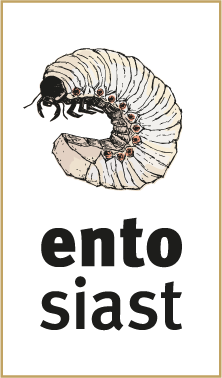In the following fields of society, beneficial insects will play a strong role in the future:
Insects as food
The growing world population presents us with the task of finding alternative ways of producing food. By 2050, the world's population is expected to increase from the current level of around 7.8 billion to as many as 9.7 billion. To ensure that we can feed everyone safely in the future without destroying valuable ecosystems, sustainable approaches are needed - insect-based foods can make an important contribution here.
Around 2 billion people worldwide already regularly feed on beetles, grasshoppers or caterpillars - and for good reason: they contain a lot of protein as well as valuable minerals and vitamins.
Currently, up to 2,000 edible insect species are known. In Asia, Africa and Latin America in particular, they are considered traditional foods. Edible insects, such as cockchafer, were also found in German kitchens until the middle of the 20th century.
People from western cultures still find it difficult to understand insects as food - many feel aversion or disgust. However, it is important to know that in Europe we are not supposed to consume insects as a whole.
In Europe, insects such as yellow mealworms, buffalo worms or crickets are permitted as ingredients of "novel foods." For example, various companies offer pasta, hamburgers, crackers or protein bars that contain insect flour or insect oil as ingredients. For the exotic palate, however, whole insects are also available in Germany, for example as so-called snack insects.
Insects as feed
In nature, insects are a rich source of food for animals:
- Fish hunt insects and their larvae in their natural element.
- Birds chase insects in the air and track them on the ground.
- Wild boars rummage through forest floors in search of insect larvae and adults.
- Wild cats and dogs feed on whatever the environment offers them - insects are also on their menu.
These animal groups are naturally capable of digesting insects and using their elements, the protein and fat they contain, for their metabolism.
Insects are also gaining importance for agriculture as an alternative feed source for livestock. Insects have been approved for feeding in European aquacultures since 2017. In August 2021, the European Commission also granted approval for the use of insect proteins in the feeding of pigs and poultry.
So far, soy and fishmeal are considered the main sources of protein in fish farming and pig and poultry farming. Large natural areas are destroyed for soy cultivation, and a great deal of fish is caught to produce fishmeal. This contributes to the decline of natural fish stocks. Feed based on insects, ideally from regional breeding, offers a sustainable alternative here.
Insects are also very suitable for our pets - for dogs and cats - as an alternative source of protein. With their help, it is possible to greatly reduce the production of meat for animal feed.
Elements of the insect body
The insect body consists mainly of three components: Protein, fat and chitin.
Protein is the basic element of every body and is composed of a number of different components. Among the smallest protein building blocks are amino acids. Some of these, known as essential amino acids, can only be ingested through our food - making them correspondingly important for our diet.
Buffalo worms, the larvae of the grain mold beetle (Alphitobius diaperinus), for example, contain a particularly large number of such essential amino acids.
Fat provides our body with energy and supports important functions of our metabolism. Some fats, such as the so-called omega 3 and omega 6 fatty acids, cannot be produced by the human organism itself - we have to supply them to our body through food. Mealworms, the larvae of the flour beetle (Tenebrio molitor), contain particularly high levels of omega 6 fatty acids.
Chitin is a basic material for protective body shells - the insect carapace, also called the exoskeleton, also consists largely of it. Chitosan is chemically modified chitin. As an ingredient in foods, chitosan strengthens physical defenses, supports the intestinal flora and counteracts microorganisms such as disease-causing bacteria.
The body needs vitamins, minerals and trace elements for muscle growth, energy balance, physical defenses and much more.
Many edible insects contain a balanced ratio of these important basic elements.
Reducing the ecological footprint with insects
Insect breeding can help us reduce our ecological footprint on the planet by
- conserving natural resources
- preserving native habitats
- reducing CO2 and methane emissions, and
- using residues from food production and agriculture in a more sustainable way
Protein is the main element for the body to grow. That is why pig or chicken feed, for example, contains a lot of soy protein. Insects can convert organic residues into high-quality protein - a valuable property, since nearly 90 million metric tons of food are spilled unused every year in Europe alone. Regional insect farming may also reduce the import of soy from overseas.
We use large parts of our cultivated land exclusively to produce fodder for livestock. It takes enormous areas to spread manure and slurry from cattle, pigs and poultry. Many insect species naturally live closely together. So-called "vertical farming" makes it possible to rear insects in just a few square meters of floor space.
Greenhouse gases cause climate change by trapping heat. Cows in particular emit a lot of methane gas – contributing to rising temperatures around the globe. In farming systems, insects such as mealworms produce 10 to 100 times fewer greenhouse gases than pigs, for example.


